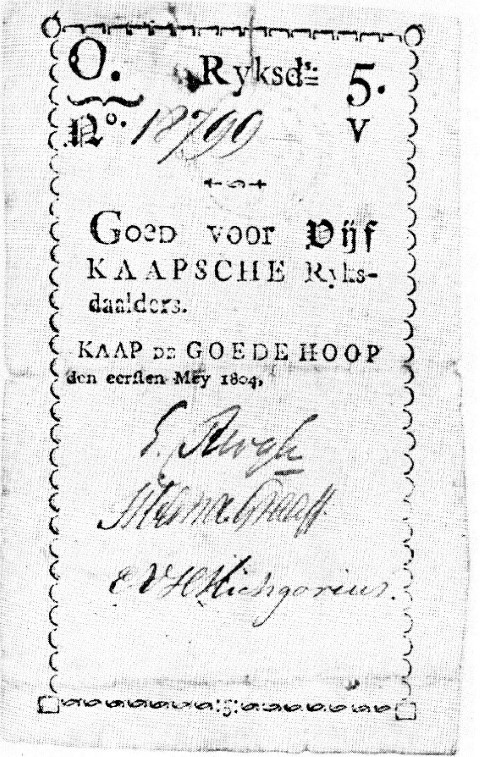Interpreting old documents having archaic units
Many people today will not remember the usage of pounds, shillings and pence (£.s.d) let alone any of the units used in documents from the 18th and 19th centuries. This short article will discuss some of the more commonly used units of measurement in South Africa.
Length and Area
The scene was set on the arrival of Rijkloff van Goens in 1657. Rijkloff was an important person within the Dutch East India Company. At his insistence, the plots of land already granted to free burgers were cancelled and new plots given of a defined extent. In his instructions he stated “In the distribution of land to the burgers you will follow the Rynland measure as in use in Holland Zeeland; 12 inches being a foot, 12 foot a rood, 100 roods a hont and 600 square roods being a morgen. Also using to the same scale 2000 roods in length being a myl which makes one exact German or Dutch myl, being 15⁰ of latitude…”
The units, inches and feet may sound familiar and even rood as in roods, poles and perches. However, they are not the same as English measurements. To make matters worse over time the Rynland foot morphed into a Cape foot, that is slightly bigger. The Rynland foot is equal to 1.03 English feet and the Cape foot 1.033.
After the second British occupation of the Cape, Imperial units were brought into use except for some things like survey diagrams. Within the area of the old Cape Province the standard unit of measurement remained morgen and square roods and on smaller plots also square (Cape) feet.
There was a period when the comparative acres and poles were also shown. From examination this was around 1868/76 and 1886/87 although there may have been other years.
The use of morgen continued in the Cape up until South Africa adopted the SI system in the 1970s. It appears that in the 1940s roods were dispensed with and decimal morgens were used instead.
From the 1830s Crown land was sold in the Cape in terms of acres but the land diagrammed in morgen. Sometimes the rough equivalent of two acres to the morgen was taken, instead of the official 2.11654. This led to more confusion.
In Natal, British units were in use from the start and areas measured in acres, roods and perches.
The reason that Rijkloff van Goens mentioned the units used in Holland Zeeland was that different towns in the Netherlands had different lengths of the same thing. The rood differed from Amsterdam having a rood of 3.67 m comprising 13 feet to the s’Hertogenbosch rood of
5.75 m comprising 20 feet. You will note that the length of the foot also differed. The same regional variation also applied to morgen.
Volume
Different units were used for liquid and dry measurement of volumes. When reading the Opgaafrolle the amount of wine and brandy was noted in Leagures (Leggers) whereas the amount of cereals (wheat, barley, oats etc.) was given in muids. Smaller volumes of liquids were also given in aums/ahms and again there is no clarity as to the exact measure.
Currency
Dutch paper money was the rixdollar based upon the Spanish silver dollar. This was divided into eight schellings each of six stuivers. This rixdollar continued in use into the British period. Its value fluctuated from 4 shillings down to 1 shilling and six pence when it was discontinued in 1825.
The unit of accounting was the guilder (f = Hollands florin). This was discounted in the Dutch colonies so that in Holland it was worth 20 stuivers, whereas in the colonies only 16. Therefore, locally three guilders equalled one rixdollar.
The British currency introduced in the Cape in 1825. This consisted of pounds (£) shillings (s) and pence (d). There were 20 shillings in the pound, 12 pence in a shilling and a penny was further sub-divided in four farthings. There were also such coins as a guinea valued at 21 shillings.
In 1849 Britain started to go decimal with the introduction of the British florin worth 1/10 th. of a pound. However, this process stalled as it could not be decided what to do next. It was not until 1966 that Britain finally went decimal.
Figure 1: Five rixdollar note from A History of the Paper money of South Africa (W.Bergman 1971)

Figure 2: The first British florin, commonly known as the godless florin due to the omission of D G – Dei Gratia ("by the grace of God”) from the inscription.
- Hits: 921
